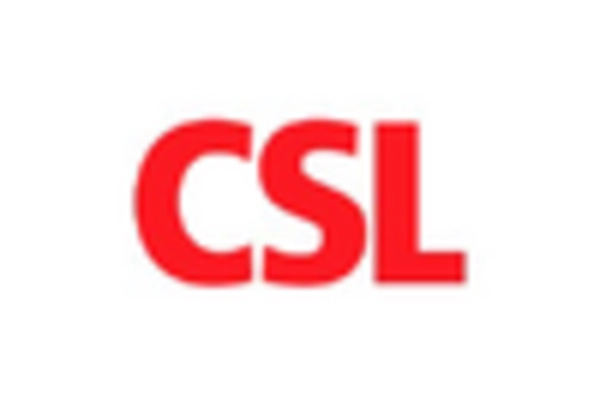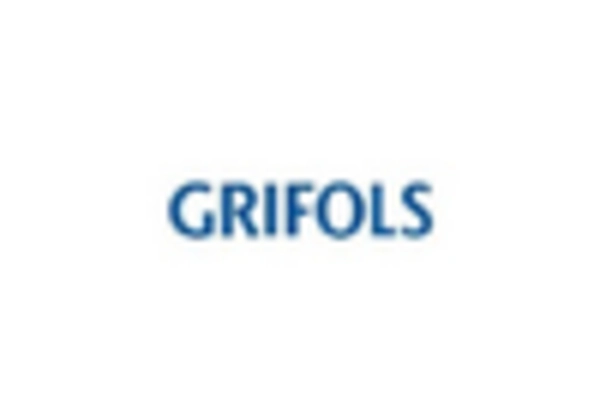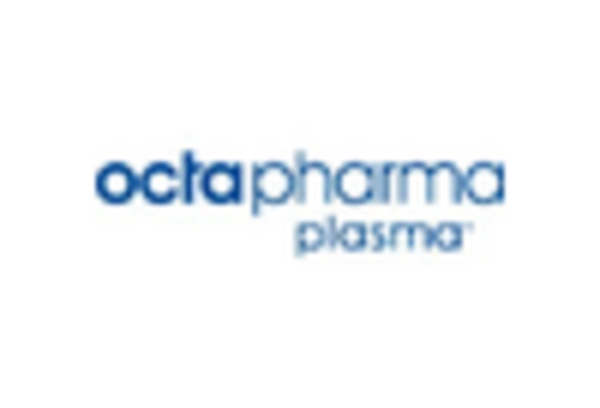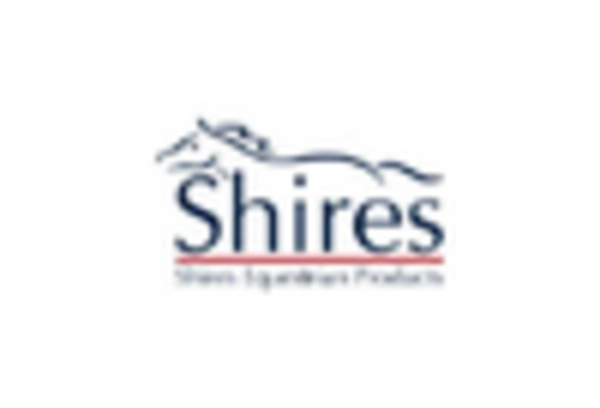Rising Awareness of Protein Supplements
The growing awareness of the benefits of protein supplements is driving demand within the albumin market. As consumers increasingly seek high-quality protein sources for muscle recovery and overall health, albumin, known for its high biological value, is gaining traction. The protein supplement market in the US is projected to grow at a CAGR of 7% over the next five years, with albumin-based products capturing a notable share. This trend is further supported by fitness enthusiasts and athletes who prioritize protein intake for performance enhancement. Consequently, the albumin market is likely to experience a surge in demand as more consumers turn to albumin supplements for their nutritional needs.
Technological Innovations in Production
Technological advancements in the production of albumin are reshaping the albumin market. Innovations such as recombinant DNA technology and improved purification processes are enhancing the yield and quality of albumin. These advancements not only reduce production costs but also ensure a more consistent supply of high-quality albumin for various applications. The US market is witnessing a shift towards more sustainable production methods, which could potentially lower environmental impacts. As production technologies evolve, the albumin market is expected to benefit from increased efficiency and reduced prices, making albumin more accessible for therapeutic and nutritional uses.
Increasing Prevalence of Chronic Diseases
The rising incidence of chronic diseases in the US is a pivotal driver for the albumin market. Conditions such as liver cirrhosis, kidney disorders, and burns necessitate the use of albumin as a therapeutic agent. According to recent data, the prevalence of chronic liver disease has increased by approximately 4% annually, leading to a heightened demand for albumin-based treatments. This trend is expected to continue, as the aging population and lifestyle factors contribute to the growing burden of these diseases. Consequently, healthcare providers are increasingly relying on albumin for patient management, thereby propelling the albumin market forward. The market is projected to reach a valuation of $3 billion by 2027, reflecting the critical role of albumin in therapeutic applications.
Regulatory Support for Biopharmaceuticals
The supportive regulatory environment for biopharmaceuticals in the US is a crucial driver for the albumin market. Regulatory agencies are increasingly streamlining approval processes for albumin-based therapies, which encourages innovation and investment in this sector. Recent initiatives aimed at expediting the review of biologics are likely to enhance the market landscape for albumin products. As a result, pharmaceutical companies are more inclined to develop new albumin formulations, anticipating quicker market entry. This regulatory support is expected to foster growth in the albumin market, with projections indicating a compound annual growth rate of 6% through 2028.
Advancements in Pharmaceutical Formulations
Innovations in pharmaceutical formulations are significantly influencing the albumin market. The development of novel drug delivery systems utilizing albumin as a carrier enhances the efficacy of various medications. For instance, albumin nanoparticles are being explored for targeted drug delivery, which could improve therapeutic outcomes for cancer patients. This advancement not only increases the utility of albumin in pharmaceuticals but also expands its market potential. The US pharmaceutical sector is expected to invest over $500 million in research and development of albumin-based formulations in the next five years. Such investments indicate a robust growth trajectory for the albumin market, as new applications emerge and existing ones are optimized.

















Leave a Comment